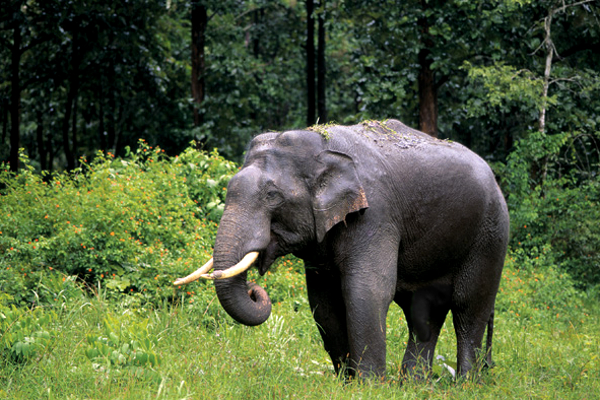As human-elephant conflicts increase with time and expanding human range, understanding social behaviour becomes crucial to the conservation and management of the highly social and endangered Asian elephant.
The Asian elephant is a charismatic species with a long history of co-existence with humans. Yet works on male societies of wild elephants based on long-term observations are rare. To fill this gap, researchers from Jawaharlal Nehru Centre for Advanced Scientific Research (JNCASR), an autonomous Institute of the Department of Science and Technology, Government of India, studied associations of male Asian elephants by collecting and analysing data on behaviour of identified nonmusth wild Asian elephants of Nagarahole and Bandipur National Parks.
They found that the time spent by male Asian elephants in all-male and mixed-sex groups depended on the age of the male. Adult Asian male elephants preferred to spend their time alone than in mixed-sex or in all-male groups. Besides, old males were found mostly in the company of their age peers and less frequently with young males (15 to 30 years of age). Also, young males did not disproportionately initiate associations with old males.
Adult male Asian elephants are less social than females. They enter musth — a mate-searching strategy for old (above 30 years of age) males, annually. The researchers hypothesised that when the adult males enter musth, dominance relationships may affect the number of mating opportunities they procure. Hence, it might be more crucial for old males than for young males to test strength with each other and settle dominance relationships during their nonmusth time.
On the other hand, since young males associated less with females during musth than non-musth time, they might also be using their non-musth time to search for mating opportunities.
The team observed male elephants and identified them using features of their ears, tails, and tusks and recorded whether males associated with each other in the presence or absence of females. They used six years of field data on 83 identified males for this study, which was published in the open-access journal ‘Frontiers in Ecology and Evolution’. They considered two possible reasons for male associations –non-musth males may use their time to fight with males of the same age class, who would be of similar sizes, to decide their dominance relationships, and young males might also use their associations to learn from older males about food resources and/or reproductive behaviour.
Their results showed that all-male groups (in the absence of females) were rare and small. According to the team, social learning from older males did not seem to play a big role in male associations. In contrast, African savannah elephants have been found to spend more time in all-male groups and to form larger groups, and young males preferred to associate with older males.
The researchers said that this could be due to the difference in the dispersion of food resources in the habitats occupied by the two species.
This study is one of the few that examines male associations in species in which males rove between social groups. It provides an example of how ecological differences could possibly drive differences in male societies in related species with similar male reproductive strategies.
You may also like
-
New Heat-Based Approach To Cancer Treatment Can Reduce Chemotherapy Doses
-
Scientists Take A Major Step Towards Unification Of Classical & Quantum Gravity
-
India Graphene Engineering and Innovation Centre (IGEIC) Under the Vision of Viksit Bharat@2047 Launched
-
New High-Performance Gas Sensor can Monitor Low Level Nitrogen Oxides Pollution
-
Antidepressant Drug can be Repurposed for Treating Breast Cancer
